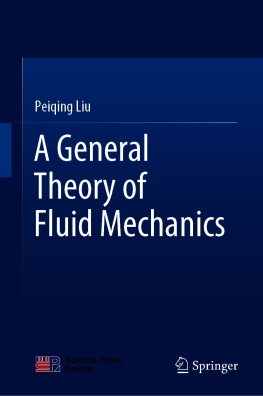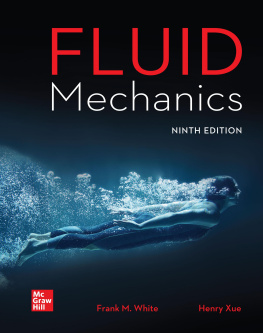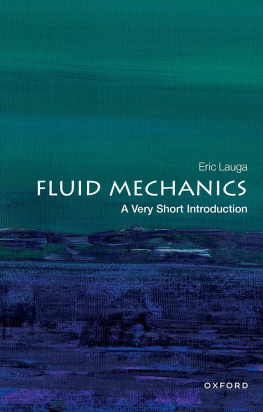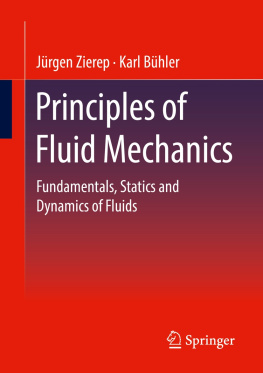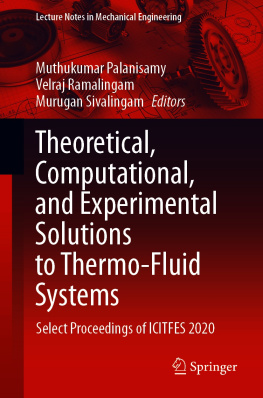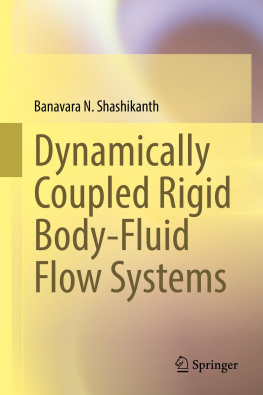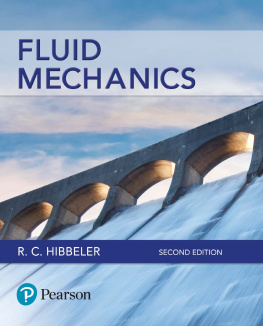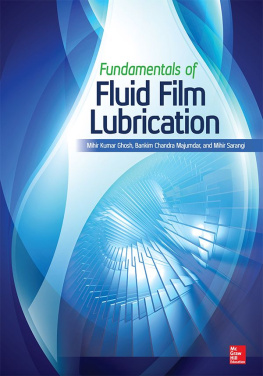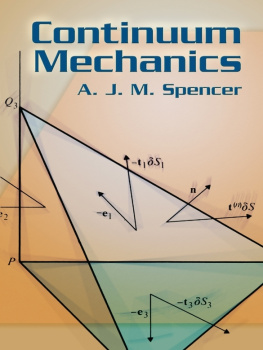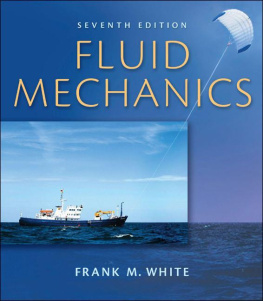Peiqing Liu - A General Theory of Fluid Mechanics
Here you can read online Peiqing Liu - A General Theory of Fluid Mechanics full text of the book (entire story) in english for free. Download pdf and epub, get meaning, cover and reviews about this ebook. publisher: Springer Singapore, genre: Children. Description of the work, (preface) as well as reviews are available. Best literature library LitArk.com created for fans of good reading and offers a wide selection of genres:
Romance novel
Science fiction
Adventure
Detective
Science
History
Home and family
Prose
Art
Politics
Computer
Non-fiction
Religion
Business
Children
Humor
Choose a favorite category and find really read worthwhile books. Enjoy immersion in the world of imagination, feel the emotions of the characters or learn something new for yourself, make an fascinating discovery.
- Book:A General Theory of Fluid Mechanics
- Author:
- Publisher:Springer Singapore
- Genre:
- Rating:3 / 5
- Favourites:Add to favourites
- Your mark:
- 60
- 1
- 2
- 3
- 4
- 5
A General Theory of Fluid Mechanics: summary, description and annotation
We offer to read an annotation, description, summary or preface (depends on what the author of the book "A General Theory of Fluid Mechanics" wrote himself). If you haven't found the necessary information about the book — write in the comments, we will try to find it.
A General Theory of Fluid Mechanics — read online for free the complete book (whole text) full work
Below is the text of the book, divided by pages. System saving the place of the last page read, allows you to conveniently read the book "A General Theory of Fluid Mechanics" online for free, without having to search again every time where you left off. Put a bookmark, and you can go to the page where you finished reading at any time.
Font size:
Interval:
Bookmark:



Jointly published with Science Press
The print edition is not for sale in China (Mainland). Customers from China (Mainland) please order the print book from: Science Press.
This Springer imprint is published by the registered company Springer Nature Singapore Pte Ltd.
The registered company address is: 152 Beach Road, #21-01/04 Gateway East, Singapore 189721, Singapore
If modern civilization originated from the rise and development of the mechanical industry, the combination of fluid mechanics and the mechanical industry has played a decisive role. It can also be said that fluid mechanics is a bright pearl on the crown of modern mechanical industry. From the ancient hydraulic machinery to the birth of the most complex modern aero-engine, it is closely related to the development of fluid mechanics. It can also be said that fluid mechanics is involved in water turbines, steam turbines, gas turbines, expanders, wind turbines, pumps, fans, ventilators, compressors, hydraulic couplers, hydraulic torque converters, pneumatic tools, pneumatic motors, hydraulic motors, and various fluid transport and control equipment, all of which use the fluid as working fluid to convert energy. Therefore, there is no doubt that fluid mechanics is the most active professional basic subject in the mechanical industry, and it is also a professional basic course offered by the technological universities. In order to stimulate the learning interest of beginners and facilitate the understanding of the basic knowledge and development of the law of fluid mechanics, I tried a compilation mode that combines scientific knowledge with the human history of fluid mechanics in the form of biography and popular science. There are eight chapters in the book, namely, basic theories of fluid mechanics, aerodynamics, hydrodynamics, computational fluid dynamics, experimental fluid dynamics, wind tunnel and water tunnel equipment, flying mystery and aerodynamics principles. In the fundamentally theoretical part, readers are introduced to the development and application of theory; in the experimental part, they are mainly introduced to the principle of similarity, flow visualization, and measurement technology; in the wind tunnel and water tunnel equipment part, they are introduced to the development and application of wind tunnel and water tunnel equipment; in the flight mystery and aerodynamics principles part, they are mainly introduced to the flight cognition, flight principle, the function of aircraft components, etc.; in the personages of fluid mechanics part, they are introduced to the role and main contribution of famous scientists in the development of fluid dynamics, including Archimedes, Da Vinci, Galileo, Newton, Leibniz, Bernoulli, Euler, Lagrange, Helmholtz, Stokes, Reynolds, Mach, etc.
In the process of material selection and discussion, this book starts with the intuitive and understandable concepts, combines scientific knowledge with historical development, and introduces the development of fluid mechanics in a simple and understandable language.
This book has been reviewed by Prof. Wei Qingding who is from the College of engineering of Peking University and Prof. Zhu Keqin who is from the School of aerospace engineering of Tsinghua University. I would like to express my deep gratitude for the important modifications and suggestions.
The process of writing this book was greatly supported by the teachers and students of the Lu Shijia laboratory of Beihang University. I would like to express my heartfelt thanks to Dr. Liu Yuan, Dr. Ren Shuili, Dr. Zheng Yunlong, Dr. Guo Zhifei and Dr. Lu Weishuang from Lu Shijia laboratory for the translation of this book into English.
The theory of fluid mechanics is rigorous and widely used, which is difficult for the compilation of general introduction. This book covers three branches: theory, experiment, and numerical simulation. In addition, there are many industrial applications. Due to the limited space, this book cannot give a comprehensive introduction. Here, aerodynamics and hydrodynamics are mainly selected as representatives. Due to the limited knowledge and energy, the systematization of the book is far from enough. I have been deeply disturbed by the fact that mistakes cannot be avoided. I am very grateful to you for your criticism and correction.
This book is a general introduction to fluid mechanics in the form of biographies and popular science. Based on teaching perception and experience for many years, the author tries a compilation mode that combines natural science and human history, knowledge inheritance and cognition law, breaks the abstract and profound knowledge of fluid mechanics, and starts with intuitive and understandable physical concepts. The history of fluid mechanics and basic knowledge are organically combined in a way from shallow to deep and from the surface to the inside. The book includes the basic knowledge and development history of the basics of fluid mechanics, aerodynamics, hydrodynamics, computational fluid dynamics, experimental fluid dynamics, wind tunnel and water tunnel equipment, flying mystery and aerodynamics principles, personages of fluid mechanics, etc., in order to provide references for stimulating the interest of beginners and comprehensively understanding the development of fluid mechanics.
This book is suitable for all people who love fluid mechanics, including teachers, graduate students, and undergraduates of colleges and universities; technicians in various industries related to fluid mechanics; and science enthusiasts. Some of the contents in the book are also applicable to middle school students.
Font size:
Interval:
Bookmark:
Similar books «A General Theory of Fluid Mechanics»
Look at similar books to A General Theory of Fluid Mechanics. We have selected literature similar in name and meaning in the hope of providing readers with more options to find new, interesting, not yet read works.
Discussion, reviews of the book A General Theory of Fluid Mechanics and just readers' own opinions. Leave your comments, write what you think about the work, its meaning or the main characters. Specify what exactly you liked and what you didn't like, and why you think so.

